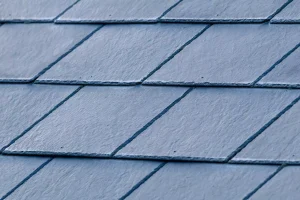
Alternatives to filling wood with epoxy
Woodworkers often face holes and cracks in wood. Learning how to fill these spaces with epoxy is a great way to prevent further damage. It also allows for easier repairs than replacing the entire plank or board. However, there are some alternatives to epoxy that can be equally effective. One option is to use wood putty. This product comes in a variety of colors and can be tinted to match the color of the wood.
The material can be very messy and can spill while filling the void. Using latex gloves is highly recommended when working with this product. It can also get on your skin and should be kept out of children’s reach. If you decide to use wood filler, be sure to follow the instructions carefully to avoid a mess.
If you aren’t comfortable working with an epoxy-based product, consider using a liquid wood filler instead. This is a thin layer of epoxy that covers the wood fibers and dries slowly. It is best to use it in combination with a wood epoxy putty, which will provide better overall adhesion. However, you will need to wait several hours before it is completely dry.
Cost
If you are working on a wooden deck or a wood door, you might want to fill the hole. But it’s important to note that this process is expensive, so you may want to use a different type of epoxy. The best option is liquid epoxy. It flows into the wood, filling in holes that are not visible. Then, you can sand it to match the shape of the surrounding wood.
The cost of filling wood with epoxy will vary depending on the type and quality of the epoxy. Water-based epoxy is the cheapest type, costing approximately $40 per gallon. It’s easier to apply, but it isn’t as durable as solvent-based epoxy. Although it will stand up to scratches and minor exposure to chemicals, water-based epoxy is not the best choice for outdoor decks and is usually replaced every one to three years. Solvent-based epoxy, on the other hand, can cost as much as $45 per gallon, but it is stronger and more durable than water epoxy. However, it also has a major drawback: it emits volatile organic compounds that are dangerous to breathe.
Epoxy filler is a good choice for larger holes and voids in wood. Epoxy putty adheres well to the wood, creating a sturdy and long-lasting wood surface. It can also be used for repairing pegged window sills. In fact, wood epoxy resin filler is an excellent choice for many wood repairs, and can be used to fix most elements of a wooden deck or door without replacing it completely.
Cure time
The cure time for filling wood with epoxy varies depending on the type of material you’re using. If you’re using a putty, for example, it can take several days to completely cure. If you use a paste, the cure time may be longer.
When you’re filling wood with epoxy, you should allow the filler to cure for at least 24 hours before you try to paint or stain it. Once the filler has cured, you can then sand it down and apply a stain or paint. The final result will look and feel just like wood, which means you can drill or saw through it.
The cure time for filling wood with epoxy depends on the type of product and manufacturer. Usually, the process takes a day to complete, but this can vary. Some brands require 24 hours, others require up to a week. Then, you can finish it by sanding it by hand.
Application method
There are various methods to fill wood with epoxy. One of them is to mix the filler with epoxy, which requires a putty knife. It is important to keep the mixing materials cool before adding them to the wood. In order to make mixing easier, the epoxy filler should be kept in a closed container with a labeled lid or stick.
To prepare the wood for epoxy wood filling, it is important to remove any existing paint or caulk. Depending on the type of epoxy wood filler, you may even have to use paint stripper. The wood should also be free from dust. Dust and dirt can affect the adhesion of the epoxy wood filler. Also, if the wood is bent, it may affect the shape of the epoxy filler.
Once the epoxy resin has cured, the next step is to fill holes and cracks in the wood. The holes should be filled so that the epoxy will not drain out through the bottom of the board. If the wood filler is not thick enough, it may be necessary to add some more. To ensure that the filler reaches the surface of the wood, it must be poured slowly and carefully.




